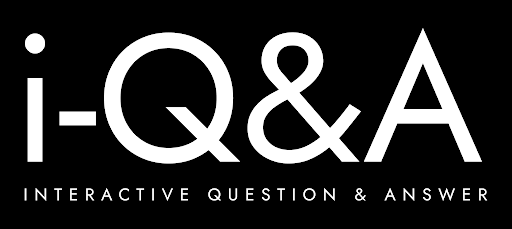
You’ve probably experienced it yourself: you’re on a website, ready to buy, but you’ve got one last question. You look for the FAQ section and hope it has what you need. Sometimes it does—clearly, helpfully, and quickly. Other times, you’re met with confusing jargon, outdated answers, or endless scrolling.
Now imagine this from your customer’s perspective.
If your FAQ page doesn’t provide immediate, reassuring answers, your visitor may leave—and not return.
Creating a helpful FAQ page isn’t just a good idea. It’s one of the most practical, impactful things you can do to build trust, lower support enquiries, and encourage conversions. In this blog, we’ll walk you through how to create a genuinely useful FAQ template—step by step—with examples, design tips, and industry best practices.
What Is an FAQ Page and Why Should You Prioritise It?
An FAQ (Frequently Asked Questions) page is a dedicated space where you answer the most common queries your customers might have before or after buying. It covers everything from delivery times to payment options, troubleshooting, return policies, and product usage.
Done well, it can:
- Reduce customer support workload by answering repeat questions up front
- Improve customer experience by offering help at the exact moment it’s needed
- Reinforce trust by showing you’ve anticipated concerns
- Support SEO with keyword-rich content that can appear in featured snippets
Think of it as your silent support agent—always on, always ready.
How to Create an Effective FAQ Template
Creating a strong FAQ starts with understanding your audience and their real concerns. Here’s how to build a page that works.
1. Identify Common Questions
Don’t guess—get your information directly from the source:
- Customer service emails and support tickets
- Live chat transcripts
- Product or service reviews
- Social media comments
- Competitor FAQs
- Forums like Reddit or Quora
If you keep seeing the same questions, that’s a signal to include them in your FAQ.
2. Organise Content Into Clear Sections
Group questions into categories so people can find what they need quickly. Typical sections include:
- Product or Service Information – Compatibility, instructions, warranties
- Shipping and Returns – Delivery times, return window, international options
- Payments and Billing – Methods accepted, errors, refunds, taxes
- Orders and Accounts – Tracking orders, creating an account, editing details
- Support and Contact – How to get in touch if the FAQ doesn’t help
Use bold headings and logical groupings to guide readers through.
3. Write Answers That Are Short, Clear, and Honest
Effective FAQ answers are:
- Written in plain English
- Free from jargon
- Clear on what the customer should do next
- Updated regularly
For example:
Q: How long does delivery take?
A: We dispatch within 1–2 working days. Standard UK delivery takes 3–5 working days.
If needed, end answers with links to take the user to more detail or a relevant page.
Make It Easy to Navigate
Your FAQ should not feel like a wall of text. Design plays a big role in usability. Here are smart features to include:
- Accordion dropdowns – Let users expand answers as needed
- Search bar – Useful for FAQs with lots of content
- Prominent categories – Break questions into topics like “Shipping” or “Returns”
- Mobile-friendly layout – Most users will be browsing on their phones
- Prioritise common queries – Put the most frequently asked questions at the top of each section
The best FAQs respect the customer’s time. If your page requires scrolling through dozens of questions to find an answer, it’s not working hard enough.
Strategic Placement: Where to Feature Your FAQ
Your FAQ should be easy to find and accessible throughout the user journey. Consider these locations:
- Top menu or Help menu
- Footer (still widely used and expected)
- On relevant product or checkout pages
- Embedded within your live chat interface
- Linked from confirmation or order tracking emails
The goal is to anticipate the moment of uncertainty—and provide an answer before a support ticket is raised or the customer clicks away.
Real-World Examples to Inspire You
Here’s how some successful ecommerce and DTC brands use FAQ pages effectively:
- Huel – Collapsible dropdowns and split sections for product questions and general support
- Magic Spoon – Casual tone with serious answers; clear and friendly
- KITH – Seasonal updates reflect changing customer priorities, such as holiday shipping
- FIGS – Visual icons and sleek layout improve usability
- Santa Cruz Bicycles – Product-specific FAQs on individual pages, right when the customer needs clarity
These examples work because they’re structured, customer-first, and aligned with each brand’s tone of voice.
Sector-Specific FAQ Template Samples
Here’s how FAQs can be adapted for different industries:
Ecommerce
Q: Do you offer next-day delivery?
A: Yes, available at checkout for UK addresses before 2pm.
Finance
Q: Is online banking secure?
A: We use bank-grade encryption and require two-factor authentication on all accounts.
Telecom
Q: How do I top up my data?
A: Log in to your account, go to “Plans & Usage” and select a data add-on.
Retail (with physical stores)
Q: Can I return items bought online in-store?
A: Yes—just bring the product and proof of purchase within 28 days.
SEO Benefits of a Properly Built FAQ Page
A well-written FAQ page can improve visibility in search results and support your overall SEO strategy.
How?
- Use question-based headings like “Do you ship internationally?”
- Include internal links to relevant service or product pages
- Mark up your FAQ page with structured data (schema.org) so it’s eligible for Google’s rich results
- Create stand-alone landing pages for questions that need deeper answers
The added bonus? Visitors coming from search engines may land directly on your FAQ and find exactly what they need—no digging required.
Keep It Fresh: Update Regularly
Your FAQ should grow with your business. Set a reminder to update it:
- When you release a new product or service
- Before seasonal events like Black Friday or Christmas
- When your return policy or delivery times change
- Based on feedback from customer service teams
Outdated FAQs damage trust. Make sure the page reflects what’s currently true.
Apps and Tools for Building FAQ Pages (Shopify)
If you’re on Shopify, these tools can help streamline the process:
- HelpCenter – Easy to manage, with search and multi-category support
- POWR FAQ Page – Customisable design with accordion layout and media support
- Enorm FAQ – Mobile-optimised and integrates into product pages for context-relevant answers
These apps require minimal setup and can match your website’s style without needing custom code.
Final Thoughts: The FAQ Page Is a Business Tool, Not an Afterthought
An FAQ page isn’t just a box to tick—it’s a chance to build confidence, reduce friction, and turn browsers into buyers. When it’s well-designed, clearly written, and placed where it’s needed, it quietly becomes one of the most valuable pages on your website.
Start with the questions your customers are already asking. Write answers like a human. Design with purpose. And keep it updated.
That’s how you build a page that helps people buy with confidence.
This blog was written for i-Q&A—helping businesses build trust one answer at a time. Learn more at https://i-qa.net.
